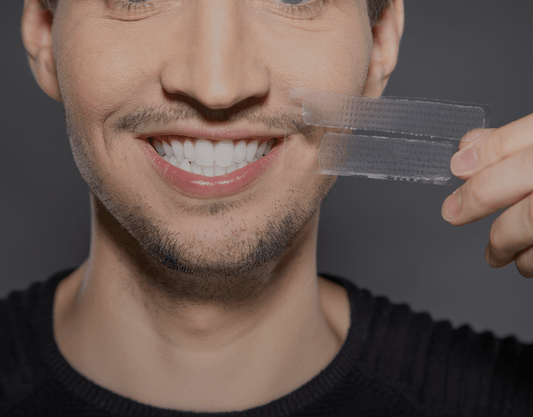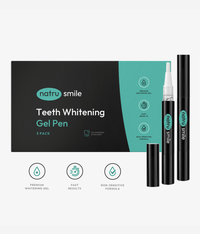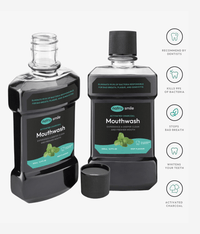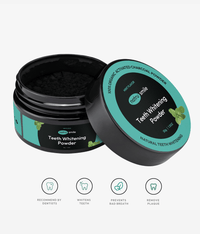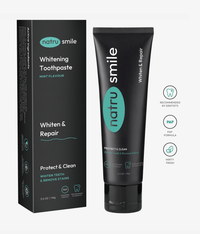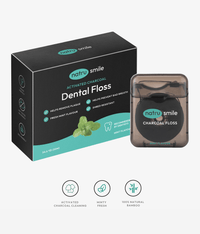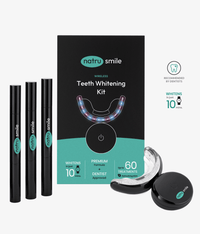
All products are certified by dental expert Dr. Greg Grillo
You've probably seen a commercial for teeth whitening strips, and you may have wondered what the fuss was about.
After all, a teeth whitening product that costs under $100 and promises multiple shades of whitening sounds too good to be true.
The reality is that teeth whitening strips actually can deliver on that promise. To an extent.
Although some dental experts and one-off studies say teeth whitening strips can be damaging to tooth enamel, ADA research maintains that products with a seal of approval from the ADA Seal of Acceptance are safe and effective when used as directed.
In truth, a lot of factors—from the type of whitening strips used to how often you use them—determine how much success you will find. This article tells you everything you need to know to make an educated decision about how to improve your smile.
What Are Teeth Whitening Strips, And How Do They Work?
Teeth whitening strips are thin, flexible pieces of plastic that users wear on their teeth for a short period of time (about 30 minutes). The strips are coated with hydrogen peroxide, which is the active ingredient that whitens teeth.
When hydrogen peroxide comes into contact with tooth enamel, it penetrates and breaks down the bonds between molecules that give teeth their color. This process, known as oxidation, causes the molecules to scatter and become less concentrated, resulting in a lighter shade of enamel.
People use teeth whitening strips to reverse extrinsic stains (caused by things like coffee or smoking) and intrinsic discoloration (which is caused by aging).
How To Use Teeth Whitening Strips
You can use whitening strips in one of two ways:
- Purchasing them over the counter at a local drug store or supermarket. In this case, the strips are pre-coated with hydrogen peroxide and you simply peel them off their packaging and apply them to your teeth.
- Having a dental professional apply custom-fitted trays filled with whitening gel to your teeth. This method requires several trips to the dentist's office over the course of several weeks.
Let's take closer look at how to use teeth whitening strips each way.
1. Using Over-The-Counter Whitening Strips
The first option is the most budget-friendly and convenient option, which is why it is also the most common.
When you purchase over-the-counter teeth whitening strips, they come pre-coated with hydrogen peroxide. All you have to do is peel them off the packaging and apply them to your teeth.
Most brands recommend that you leave the strips on for 30 minutes and then remove them.
Depending on the brand, you may need to wear the strips once a day for up to two weeks or twice a day for up to three weeks in order to achieve optimal results.
Do not use an over-the-counter whitening regimen more than once every six months. Preliminary research suggests that whitening strips can be damaging to teeth when used in excessive quantities, and at-home treatment is much more error-prone.
2. Using Custom-Fitted Trays
The second option is more expensive and time-consuming, but it also delivers better results.
If you opt for this route, your dentist will take a mold of your teeth, which he or she will then use to make custom whitening trays.
Once you receive your trays, they need to be filled with whitening gel and worn for 30 minutes every day—typically over the course of several weeks.
A significant advantage of this method is that it allows your dentist to precisely measure the amount of whitening gel, which is much more difficult to do with over-the-counter strips.
The Benefits Of Teeth Whitening Strips
Compared to other teeth whitening options, whitening strips offer numerous benefits. Since they are low-cost and have a straightforward application process, they are attractive to many users.
1. Affordable
The greatest selling point for most whitening strip users is their affordability. Most of the time, they cost between $30 and $50, making them much cheaper than professional whitening. Compared to other home whitening costs, whitening strips are also on the lower end.
Even people who have dental insurance typically find that whitening strips are still the more economical option, as dental insurance doesn't cover cosmetic procedures.
2. Easy To Use
Compared to teeth whitening kits and other at-home treatments, whitening strips are very easy to use. All you have to do it peel them off the package and apply them to your teeth for 30 minutes a day.
Measuring out gel and applying it to your teeth can be confusing, so having straightforward instructions and quick application times make them attractive to many users.
3. Effective
Compared to other OTC options, almost all available research points to whitening strips as the most effective teeth whitening option.
The results are often immediate (i.e., apparent after the first application), and users can achieve the desired shade of white after using the strips for a few weeks.
And if you're choosing between whitening strips and natural teeth whitening, the former definitely wins out in terms of effectiveness. Many home whitening fads don't actually work and can be detrimental to your teeth.
4. Protection From Irregular Whitening
Irregular whitening is a common problem users face with at-home whitening solutions. Since they are error-prone and often applied without dental advice or supervision, the likelihood of having an uneven whitening effect is higher.
Using whitening strips can help protect against this, as they are pre-measured and self-contained to ensure even application and results. When you apply them to your teeth, they cover the entire surface equally for an even whitening effect.
5. Minimal Sensitivity
Sensitivity is still a common side effect for whitening strip users. But compared to in-office whitening—which can be unbearable for some people—it is much more tolerable.
Most users report a minor tingling sensation while they are wearing the strips, but it usually subsides after they remove them. And if the sensitivity is too uncomfortable, users can always reduce their exposure time or frequency of use until they find a solution that suits them.
6. Always Available
No matter where you live, a grocery store, supermarket, or drug store will carry multiple types of whitening strips. You don't have to look for specialty stores or wait for them to be delivered.
This convenience is especially attractive in rural areas, where finding certain products can be difficult due to lack of availability.
Online, whitening strips are always a few clicks away, making them even more appealing for users who don't have access to other options.
6 Tips When Using Teeth Whitening Strips
If you want to enjoy the benefits of white teeth, whitening strips are one of the best options—but you have to use them properly if you want to avoid damaging your teeth.
Here are six tips to ensure you use them properly and maximize your whitening results:
1. Brush Your Teeth Prior To Application (Not After).
It's always a good idea to brush your teeth before whitening. Doing so ensures that any bacteria or plaque is removed before the whitening strip is applied.
Brushing your teeth after using whitening strips, however, will undo the whitening results. The active ingredients in toothpaste can break down the peroxide and strip away some of the whitening effects.
2. Make Sure Your Teeth Are Completely Dry Before Applying The Strips.
If your teeth have saliva or water on them, it can prevent the strip from adhering correctly to your enamel. To maximize results, make sure that your teeth are totally dry before you apply the strips.
Of course, some saliva is natural. And over the duration of your whitening session, some saliva will accumulate.
But before treatment, dry the area of application (your front teeth) with a towel before applying the strips to ensure they stick.
3. Avoid Uneven Whitening.
Although whitening strips make it easy to evenly whiten your teeth, you should still take extra care to be precise when applying them.
If you're not careful, it's easy for the strips to slip and end up unevenly distributed on your teeth. This can cause an uneven whitening effect and make your smile look patchy.
Whitening teeth with braces is not possible. If you attempt to use whitening strips over the metal brackets, the strips will not adhere to the metal. Instead, they will unevenly whiten your teeth—a problem that you'll notice as soon as they're removed.
4. Follow The Instructions Closely.
Teeth whitening safety is important, and how well your body responds depends largely on how you decide to use your strips.
The instructions on whitening strips are there for a reason—so make sure you follow them exactly and use the product as directed. This includes both the amount of time you leave them on your teeth and how often you use them.
The most important rule to follow is to use the strips only as long as directed. If you don't, you could cause more harm than good by damaging your teeth and irritating your gums with over-exposure to peroxide.
5. Avoid Contact With Your Gums.
Your gums are sensitive just like your teeth are. And if you aren't careful, the peroxide gel from your whitening strips can burn your gums.
To avoid the worst teeth whitening side effects, make sure to carefully apply the strips and keep them away from your gums. If you get any of the gel on your gums, wipe it off immediately with a damp cloth or paper towel.
6. Don’t Consume Dark Foods Or Beverages.
There are many foods and drinks that can damage your teeth. For whitening, the most essential ones to avoid are the dark-colored ones that can stain your mouth long-term.
Wine, coffee, black tea, and dark juices are the most damaging, but other foods like blueberries and tomato sauce can also cause staining.
If you need to drink coffee every day or like to enjoy a glass of wine every night, you can still whiten your teeth. But try to avoid these drinks and foods for the duration of your whitening treatment, or at least brush your teeth shortly afterward.
Final Thoughts
Teeth whitening strips are effective and convenient for at-home whitening. But if you want to maximize your results, it's important to use them properly and follow the instructions closely.
By making the effort to follow instructions properly, avoid contact with your gums, and avoid dark-colored food and drinks, you can achieve safe and effective results.
For best results, it's also a good idea to check with your dentist before starting any whitening treatment. They may be able to provide more tailored advice on how to use the strips effectively or even recommend an alternative solution that will give you better results.

